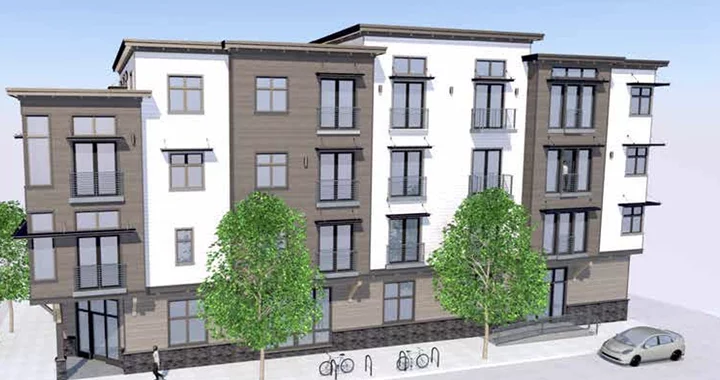jar546
Forum Coordinator
Revisiting the American Dream: The Cost of Car Dependency and the Push for Urban Density
The American landscape has undergone a dramatic transformation since the 1940s, a change driven largely by zoning laws that have favored a car-centric way of life. This shift has led to widespread urban sprawl, creating cities that resemble massive parking lots more than cohesive communities. The dream of open roads and spacious suburban living, once a symbol of American prosperity, is now facing critical scrutiny as the country grapples with the environmental, economic, and social costs of its deep-rooted car dependency.
In places like Cobb County, Georgia, road infrastructure is predominantly built to support automobile use, a practice entrenched by zoning requirements. These regulations often mandate the widening of streets in tandem with new development, inadvertently leading to overbuilt and inefficient road networks. Moreover, the requirement for substantial off-street parking with each new development has created a geometry problem. Large areas dedicated to parking have made walkable, dense urban development nearly impossible, resulting in environments where the automobile is the only feasible mode of transportation. This self-perpetuating cycle of car dependency is further evidenced in the sprawling suburbs characterized by single-use zoning and low-density development, a trend that has significantly increased carbon emissions and environmental footprints across the nation.
The judicial system has begun to acknowledge the impacts of these zoning practices. Since the 1960s, American state courts have required municipalities to tangibly justify how zoning regulations, including those dictating minimum lot sizes, align with state zoning enabling acts. Environmental protection and exclusionary effects are increasingly considered in the constitutionality of zoning ordinances, reflecting a growing awareness of the broader implications of such policies.
Urban sprawl and car dependency have not gone unchallenged. Cities like New York and San Francisco have implemented bans on private vehicle use on their most congested roads, leading to increased public transportation usage, faster commute times, and a reduction in pedestrian accidents. Boston has embraced a similar approach, creating more bike lanes and pedestrian-friendly streets in response to the car-centric urban design.
However, regulatory environments still have significant room for improvement, especially in terms of pedestrian safety and environmental sustainability. The prevalence of SUVs, for example, poses a higher risk to pedestrian safety. Vehicle safety regulations often neglect the protection of pedestrians and cyclists, focusing instead on the occupants of the vehicles. The environmental costs of road building are substantial, yet these are largely overlooked by regulatory agencies like the EPA. The construction of highways and the resulting carbon emissions contribute significantly to the nation's environmental footprint, yet there is little in the way of policy to mitigate these impacts.
The future of urban development in the United States hinges on a critical reassessment of our dependence on automobiles. The solution lies in a multifaceted approach that includes policy reforms, urban planning reimaginations, and a cultural shift in transportation preferences. Embracing increased urban density and expanded public transportation could mark a significant step towards a more sustainable, economically viable, and socially equitable urban future.
The American landscape has undergone a dramatic transformation since the 1940s, a change driven largely by zoning laws that have favored a car-centric way of life. This shift has led to widespread urban sprawl, creating cities that resemble massive parking lots more than cohesive communities. The dream of open roads and spacious suburban living, once a symbol of American prosperity, is now facing critical scrutiny as the country grapples with the environmental, economic, and social costs of its deep-rooted car dependency.
In places like Cobb County, Georgia, road infrastructure is predominantly built to support automobile use, a practice entrenched by zoning requirements. These regulations often mandate the widening of streets in tandem with new development, inadvertently leading to overbuilt and inefficient road networks. Moreover, the requirement for substantial off-street parking with each new development has created a geometry problem. Large areas dedicated to parking have made walkable, dense urban development nearly impossible, resulting in environments where the automobile is the only feasible mode of transportation. This self-perpetuating cycle of car dependency is further evidenced in the sprawling suburbs characterized by single-use zoning and low-density development, a trend that has significantly increased carbon emissions and environmental footprints across the nation.
The judicial system has begun to acknowledge the impacts of these zoning practices. Since the 1960s, American state courts have required municipalities to tangibly justify how zoning regulations, including those dictating minimum lot sizes, align with state zoning enabling acts. Environmental protection and exclusionary effects are increasingly considered in the constitutionality of zoning ordinances, reflecting a growing awareness of the broader implications of such policies.
Urban sprawl and car dependency have not gone unchallenged. Cities like New York and San Francisco have implemented bans on private vehicle use on their most congested roads, leading to increased public transportation usage, faster commute times, and a reduction in pedestrian accidents. Boston has embraced a similar approach, creating more bike lanes and pedestrian-friendly streets in response to the car-centric urban design.
However, regulatory environments still have significant room for improvement, especially in terms of pedestrian safety and environmental sustainability. The prevalence of SUVs, for example, poses a higher risk to pedestrian safety. Vehicle safety regulations often neglect the protection of pedestrians and cyclists, focusing instead on the occupants of the vehicles. The environmental costs of road building are substantial, yet these are largely overlooked by regulatory agencies like the EPA. The construction of highways and the resulting carbon emissions contribute significantly to the nation's environmental footprint, yet there is little in the way of policy to mitigate these impacts.
The future of urban development in the United States hinges on a critical reassessment of our dependence on automobiles. The solution lies in a multifaceted approach that includes policy reforms, urban planning reimaginations, and a cultural shift in transportation preferences. Embracing increased urban density and expanded public transportation could mark a significant step towards a more sustainable, economically viable, and socially equitable urban future.

